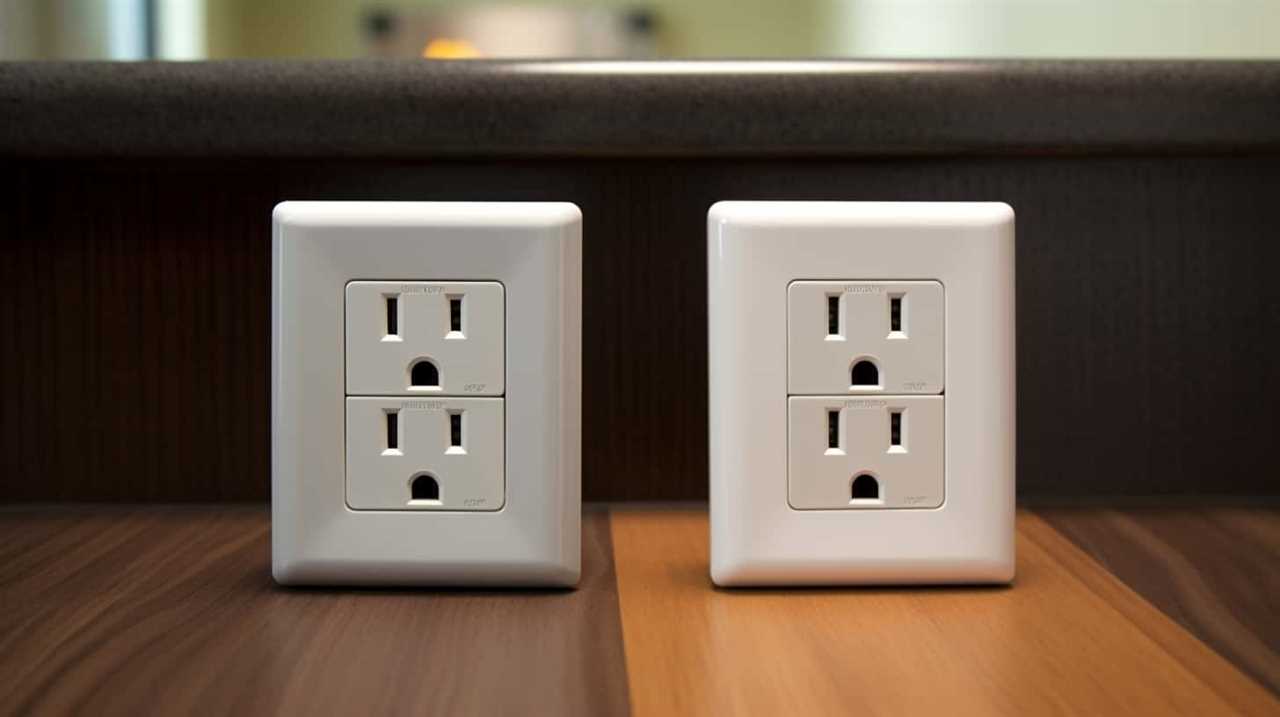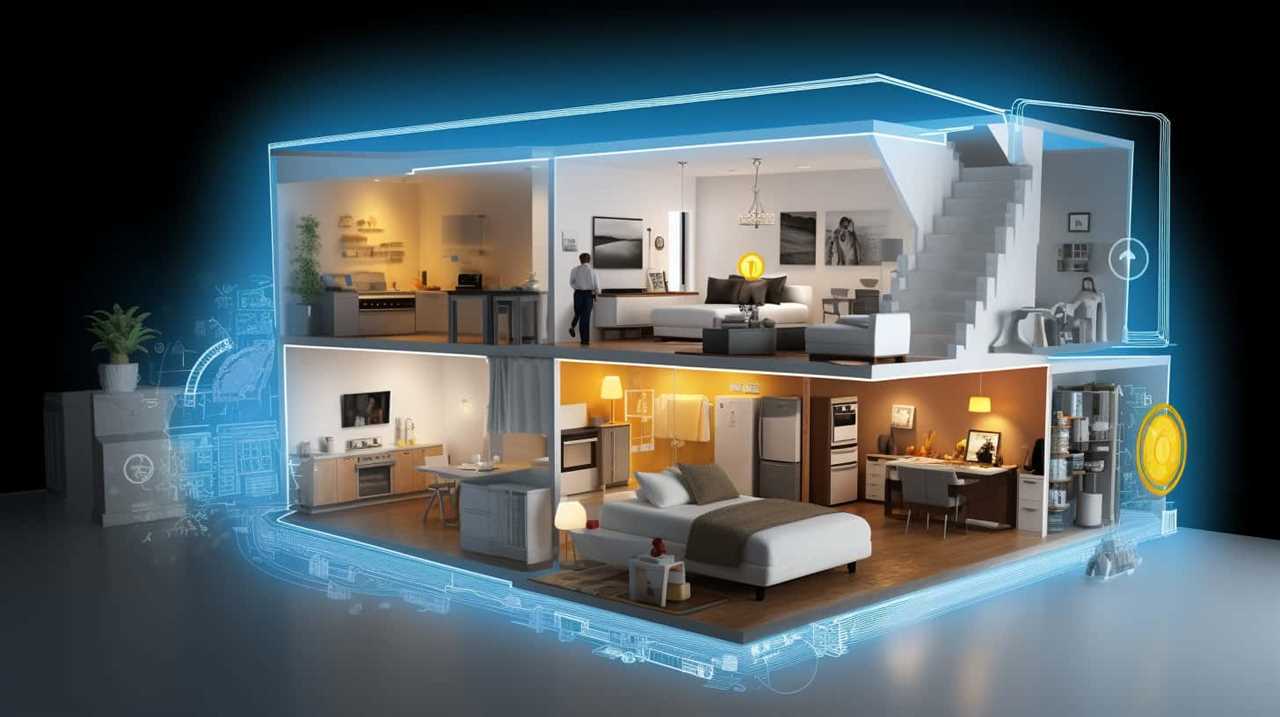Carbon monoxide is a harmful gas that can be released by different sources, presenting significant health dangers to people.
However, when it comes to electric appliances, there is a common misconception regarding their potential to release carbon monoxide. In this article, we aim to clarify this misconception and provide a comprehensive understanding of the topic.
By exploring the science behind electric appliances and their functioning, we will shed light on whether or not they emit carbon monoxide.
Additionally, we will discuss the different types of electric appliances and the safety measures necessary to prevent carbon monoxide poisoning.

This article is intended for an audience seeking mastery in the subject, providing them with accurate and reliable information on this crucial matter.
Key Takeaways
- Carbon monoxide is a highly toxic gas produced by the incomplete combustion of fossil fuels, but electric appliances do not emit carbon monoxide.
- Electric appliances have a positive impact on the environment as they consume less electricity, reduce carbon footprint, and produce fewer greenhouse gas emissions.
- Electric appliances rely on the flow of electric current through conductive materials, which makes them more efficient and environmentally friendly compared to gas-powered appliances.
- Safety measures such as using carbon monoxide detectors, proper maintenance of gas-powered appliances, and ventilation can help prevent carbon monoxide poisoning.
Understanding Carbon Monoxide: Definition and Sources
Carbon monoxide, a colorless and odorless gas, is produced by various sources and poses a serious health risk. It is crucial to understand the definition and sources of carbon monoxide to protect ourselves and our loved ones.
Carbon monoxide is primarily produced by the incomplete combustion of fossil fuels such as gasoline, natural gas, oil, and coal. Common sources include vehicles, gas-powered appliances, generators, and fireplaces. Due to its invisible and odorless nature, carbon monoxide can easily go undetected without the use of carbon monoxide detectors.
Symptoms of carbon monoxide poisoning include headache, dizziness, nausea, confusion, and in severe cases, unconsciousness or death.

Now that we have grasped the dangers of carbon monoxide, let’s delve into the different types of electric appliances and whether they emit this hazardous gas.
Different Types of Electric Appliances
There are several types of electric appliances that do not emit carbon monoxide. These appliances are not only convenient and easy to use, but they also have a positive impact on the environment. Some of the main types of electric appliances include:
- Energy-efficient appliances: These appliances are designed to use less energy, which not only helps to reduce electricity bills but also lowers the overall carbon footprint. Energy-efficient appliances such as refrigerators, air conditioners, and washing machines are designed to consume less electricity without compromising on performance.
- Environmentally-friendly appliances: These appliances are specifically designed to have a minimal environmental impact. They are made from sustainable materials, use eco-friendly manufacturing processes, and have features that promote energy conservation. Examples of environmentally-friendly appliances include solar-powered water heaters, wind-powered generators, and energy-efficient light bulbs.
Understanding the different types of electric appliances and their energy efficiency and environmental impact is crucial for making informed choices. Now, let’s delve into the science behind how these electric appliances work.
How Electric Appliances Work: The Science Behind Them
Electric appliances operate based on scientific principles and mechanisms that allow them to efficiently perform their intended functions. These appliances rely on the flow of electric current through conductive materials, such as copper wires, to generate the necessary energy for their operation.

The advantages of electric appliances are numerous. They are generally more efficient than their gas-powered counterparts, as they convert more energy into usable work. Additionally, electric appliances produce fewer greenhouse gas emissions, reducing their environmental impact. Unlike gas-powered appliances, electric appliances do not emit carbon monoxide, a dangerous gas that can be harmful to humans.
Understanding the science behind electric appliances helps us appreciate their efficiency and the positive impact they have on both our lives and the environment.
Now, let’s delve into the common misconceptions surrounding electric appliances and carbon monoxide.
Common Misconceptions Surrounding Electric Appliances and Carbon Monoxide
Many misconceptions exist regarding the emission of carbon monoxide by electric appliances. To debunk these myths and provide clarity on the potential dangers, it is important to understand the facts.

- Myth 1: Electric appliances do not emit carbon monoxide
Contrary to popular belief, some electric appliances can emit carbon monoxide, such as faulty or improperly maintained electric furnaces or water heaters. However, well-functioning electric appliances that do not involve the combustion of fossil fuels do not produce carbon monoxide. - Myth 2: Carbon monoxide detectors are unnecessary for electric appliances
While it is true that electric appliances do not typically produce carbon monoxide, having a carbon monoxide detector is still crucial. These detectors can alert you to potential dangers from other sources, such as gas-powered appliances or vehicles, which can emit carbon monoxide.
Safety Measures to Prevent Carbon Monoxide Poisoning
Implementing proper safety measures is essential to prevent carbon monoxide poisoning. Two key safety measures are the use of carbon monoxide detectors and ensuring proper ventilation.
Carbon monoxide detectors are devices that can alert you to the presence of carbon monoxide in your home. They should be installed near sleeping areas and on every level of your home. Regularly check the batteries and replace the detector as recommended by the manufacturer.
Additionally, proper ventilation is crucial in preventing carbon monoxide buildup. Make sure that all fuel-burning appliances, such as furnaces and water heaters, are properly vented to the outside. It is also important to keep vents and chimneys clear of obstructions.
Frequently Asked Questions
Can Electric Appliances Produce Carbon Monoxide?
Electric appliances do not emit carbon monoxide as they do not burn fuel. However, it is important to have carbon monoxide detectors for electric appliances to ensure safety and prevent any potential air pollution incidents.

Are There Any Risks Associated With Using Electric Appliances?
Safety measures and common misconceptions regarding the use of electric appliances should be thoroughly understood. While electric appliances do not emit carbon monoxide, it is important to follow proper guidelines and regularly maintain them to ensure optimal safety.
How Can I Tell if an Electric Appliance Is Emitting Carbon Monoxide?
To ensure electrical safety and detect the presence of carbon monoxide, it is important to have carbon monoxide detectors installed in your home. These devices will alert you if an electric appliance is emitting carbon monoxide.
Are There Any Health Effects From Exposure to Carbon Monoxide Emitted by Electric Appliances?
Exposure to carbon monoxide emitted by electric appliances may pose health risks, including headaches, dizziness, nausea, and even death. Prompt detection through carbon monoxide detectors and proper ventilation can mitigate these effects.
Are There Any Regulations or Standards in Place to Ensure Electric Appliances Do Not Emit Carbon Monoxide?
Electric appliance safety is ensured through strict regulations and standards that prohibit the emission of carbon monoxide. These measures are in place to protect public health and prevent potential risks associated with exposure to this harmful gas.

Conclusion
In conclusion, it is important to debunk the common misconception that electric appliances emit carbon monoxide. Understanding the science behind how these appliances operate reveals that they do not produce this toxic gas.
However, it is crucial to take safety measures to prevent carbon monoxide poisoning from other sources. By being aware of the facts and implementing appropriate precautions, individuals can ensure the well-being of themselves and their loved ones.










